I’ve been to roughly 80 countries, but in all of that travel I had only spent one day in Japan – a 14-hour layover in Tokyo over a decade ago. It was a huge gap in my travel experience. With a credit from National Geographic Expeditions from a cancelled trip in March, and a Japan photo expedition on NatGeo’s website focused on the fall colors, it was finally time to travel to Japan and do it right.
This time I skipped Tokyo. My philosophy is always to spend more time in smaller areas of a country and travel a little deeper, rather than try to get everywhere. The agenda was ideal for that – 10 days starting in Kyoto and ending in Hiroshima, with stops in Mount Koya, the Iya Valley, Takamatsu and Naoshima Island. And the timing turned out to be close to perfect – the fall colors were vibrant most of the places we traveled.
It was a trip of, um, unusual foods, and more culture than photography, but it gave me a great feel for the Kyoto, Wakayama, Tokushima, Kagawa and Hiroshima prefectures. There were ten unique places that I would recommend on any future trip to southern Japan:
Kyoto: Arashiyama Bamboo Grove
This is on every tourist’s radar in Kyoto, and it’s well worth a visit. The mistake that we made was going there in the afternoon with peak crowds. The best photos have just one or two people in them, and I struggled to get those shots with the sheer mass of visitors walking through. I finally got two shots that I liked.
Next time: I’ll head there first thing in the morning, or will go in the afternoon and stay until sunset.
Kyoto: The Torii Gates at the Fushimi Inari Shrine
Another site that’s commonly visited, it is very impressive in person. I had always seen photos of the gates, but assumed that it was a short walkway. I had no idea that there were more than 10,000 gates, or that they went up the side of a mountain. Every gate was donated by a business to bring good fortune.
Next time: I’ll spend several hours there and hike as far up as I can. An hour there wasn’t nearly enough time.
Kyoto: The Saihoji Temple (Saihō-Ji) Moss Garden
I’ve been to a lot of beautiful places in the world, and I would put the moss garden at Saihoji up there in my top five list. It’s an absolutely stunning garden with paths, lakes and a bed of emerald-colored moss everywhere. Add in the changing leaves and women in kimonos and this was one of my favorite places on our itinerary.
In order to obtain access to the garden, we first spent half an hour hand-copying sutras (in Japanese characters) with monks in the nearby Zen Buddhist temple. I also wrote my wish, name and address on my sutra paper, and it has since been placed in the pagoda for the monks to pray for. So I have that going for me.
Next time: I wouldn’t change a thing. Ninety minutes was a perfect amount of time to spend there. It’s the maximum that you’re allowed to be there anyway.
Mount Koya: Okunoin Temple and Cemetery
One of the most sacred locations in Japan, this is where Kobo Daishi, the founder of Shingon Buddhism, is in eternal meditation as he awaits the Buddha of the Future. Prior to arrival at the main temple and Kobo Daishi’s mausoleum you walk for two kilometers on stone walkways through tall cedar trees, passing the tombs and burial monuments of more than 200,000 monks, samurai warriors and dignitaries. The forest reminded me of the Ewoks’ planet of Endor, but with a Buddhist sensibility. An amazingly peaceful place to spend an afternoon.
Next time: I’d love to do the night walk through the cemetery. There are lanterns along the paths, so it’s not as creepy as it sounds.
Iya Valley: The Okuiya Niju Kazurabashi vine bridges
The entire Iya Valley is beautiful, especially in autumn. While we were there it rained all day, and the fog came in and out of the valley, changing the view from one one second to the next. It was perfect! My favorite spot was deep into the valley, where there are twin bridges made of intertwined vines. There’s also a self-powered rope-chair that allows you to pull yourself from one side of the river to the other.
Next time: I could have stayed there all day, but an hour and a half is sufficient to explore the area around the bridges.
Iya Valley: Scarecrow Village
Nagoro, Japan has been losing inhabitants for years to larger cities. Only 35 residents remain. So Tsukimi Ayano created scarecrows (more than 150) and placed them around the village to fill the void. It’s simultaneously cute and creepy, and I could see a horror film being made there (one of the scarecrows already has a chainsaw). Tsukimi welcomed us into her house, which is also filled with scarecrows, including an entire wedding party. I have dozens of photos and should do a separate blog post at some point.
Next time: 20 minutes is sufficient for a visit – especially since the scarecrows will be haunting my dreams for years to come.
Takamatsu: Ritsurin Park
We went to a LOT of gardens over ten days and after a while they started to look the same – pretty lakes, old bridges, fall colors. Having said that, Ritsurin Park (Ritsurin Garden) stood out. The 17th century buildings, including the tea house, add to the historic feel and complement the nature perfectly. We photographed a beautiful girl in a kimono for an hour, and I would have loved to have explored more.
Next time: I want to spend a couple of hours there, do a proper tea ceremony, and take a boat ride on the lake.
Naoshima Island: Chichu Art Museum
I liked everything about the island of Naoshima. Our hotel, the Benesse Park Hotel, was a museum. The grounds and nearby beach were beautiful, and the famous giant yellow pumpkin was fun to photograph. The Benesse House Museum was fascinating, and the Art House Project on the island added to the artistic vibe everywhere. But the single best place we visited on Naoshima was the Chichu Art Museum. No photos were allowed, even of the exterior, so click here to get a feel for the museum, and then book a plane ticket to see it in person. It only consists of three permanent exhibits, but architecturally and artistically, it’s one of the best museums I’ve been to.
Next time: I’ll spend several nights on Naoshima. I would have loved to photograph more sunrises and spend more time at each art site.
Miyajima: Everything
Miyajima island is a common day trip from Hiroshima, and it’s worth going – charming even with all the tourists. The island is best known for the Itsukushima Shrine and its nearby floating torii gate. Beyond those structures, though, I loved exploring the town of Hatsukaichi, the paths into the hills, and the temples. Oh, and there are deer everywhere – fun at first, annoying by the end of the day. One took my map out of my pocket and ate it.
Next time: We spent a full day on the island, but even then there wasn’t enough time to really go hiking. I’d stay overnight next time to be able to explore more, and to photograph the torii gate at sunrise.
Hiroshima: The bomb memorials and museum
Go to Hiroshima. Just go. It’s extremely sobering visiting the sites, monuments and museum dedicated to the atomic bomb explosion there 60 years ago. I was particularly affected by all of the items dedicated to the children who were killed – the clothing and trinkets that they had with them when the bomb was dropped, and the paper cranes made by one local girl until her early death, and then made by thousands of school children around the world since then.
Next time: A full day to visit the sites was sufficient.
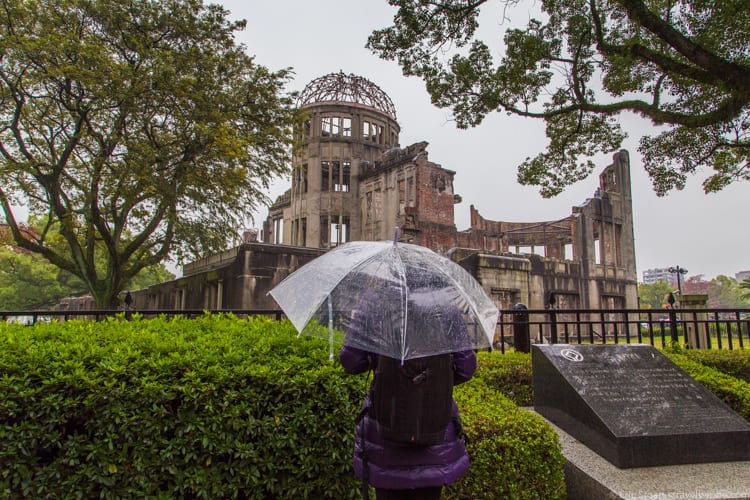
More Japan
I’ve subsequently returned to Japan several times – primarily to Tokyo and Kyoto with my daughter. If you’re looking at visiting Tokyo and Kyoto, my relevant posts are:
- Tokyo with Kids Made Easy
- Ten Places Not to Miss in Tokyo
- Kyoto with Kids
- Hokkaido: Adventure in Northern Japan
Is Japan Child-Friendly?
While most of my travel is family-oriented, I take 1-2 trips a year centered around photography. Photo trips aren’t appropriate for kids – there are often early-morning starts, fully-scheduled days and late dinners. Unless a child loved photography, he/she would likely be bored during the photography portions, and it’s not likely that many kids would be engaged during the cultural sessions (dances, speeches). There’s also a lot of time on buses. Beyond that, is Japan kid-friendly? Yes! My kids LOVE Japan, and we return often. Highlights are anime, temples, parks and museums. The lack of widely-spoken English isn’t a big deal. We love being adventurous with street food. And everything is incredibly safe.
Pin This


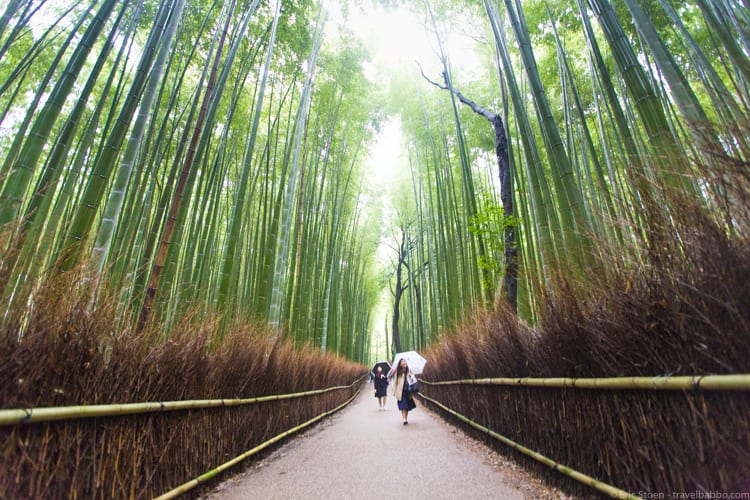
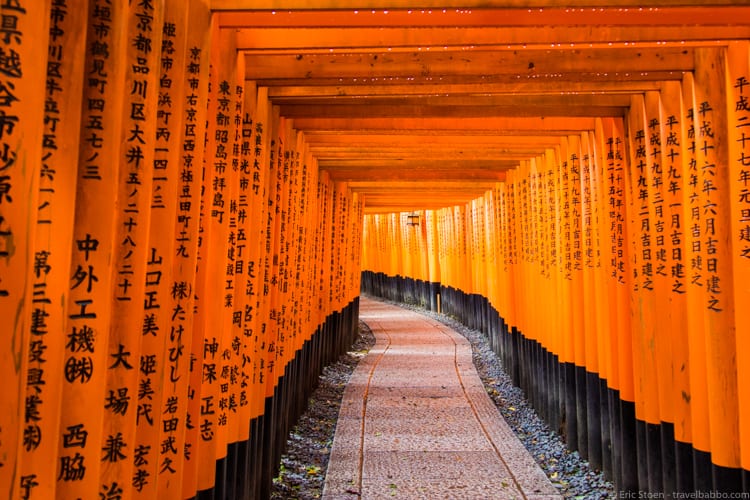
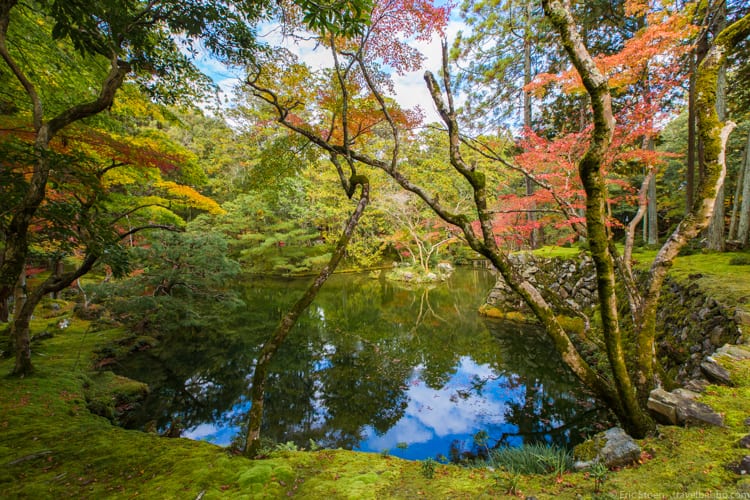
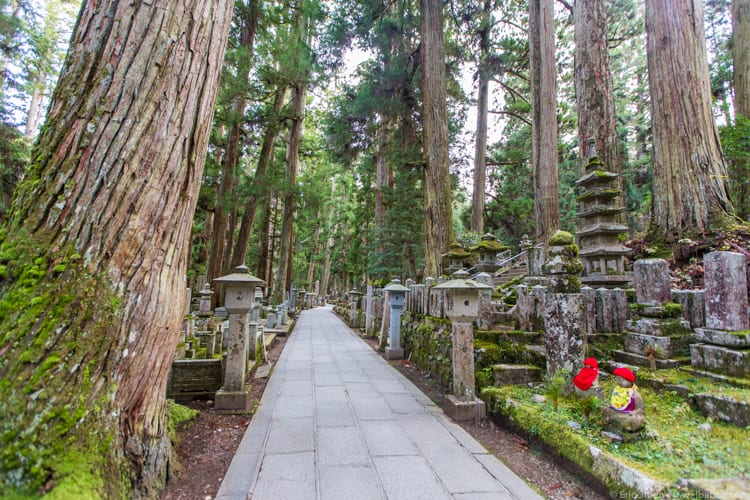
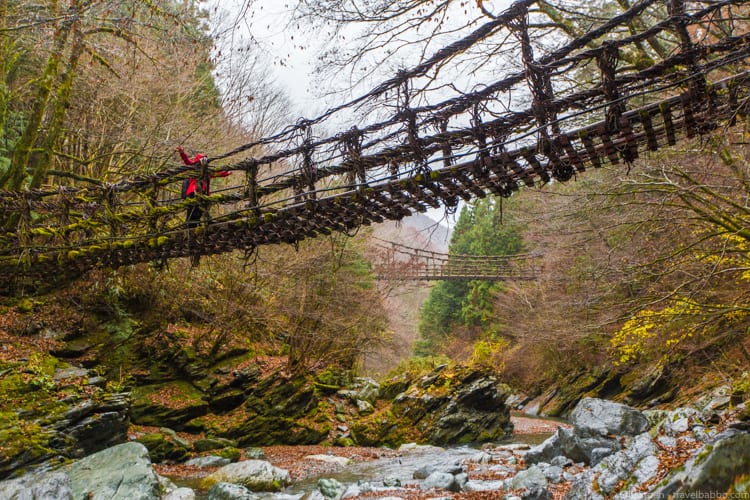
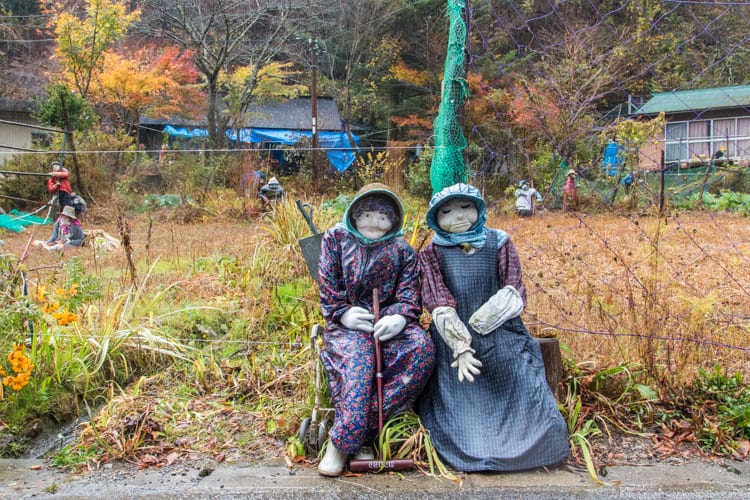
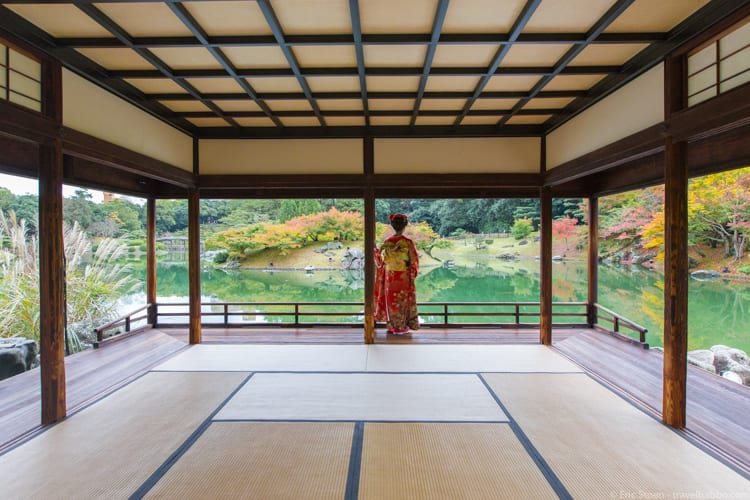
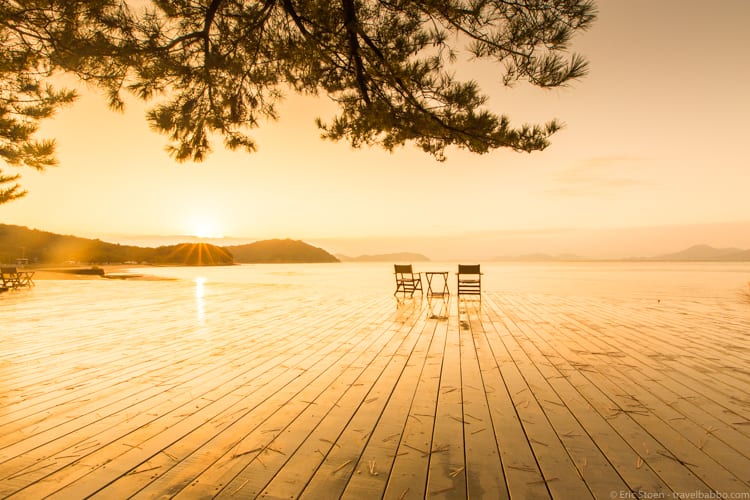
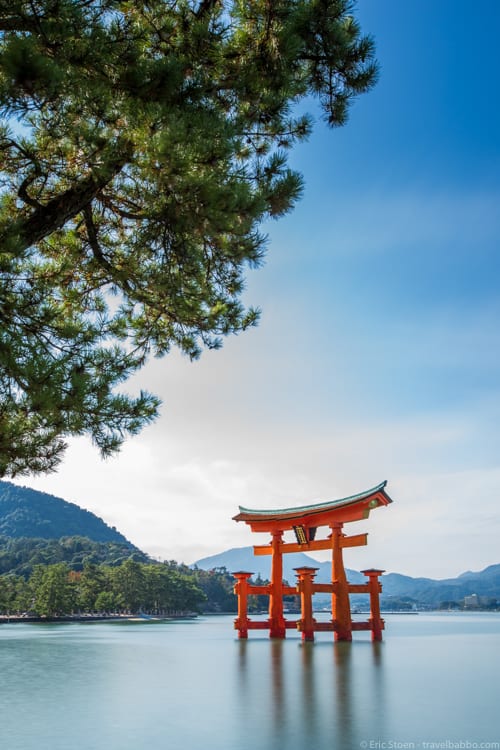
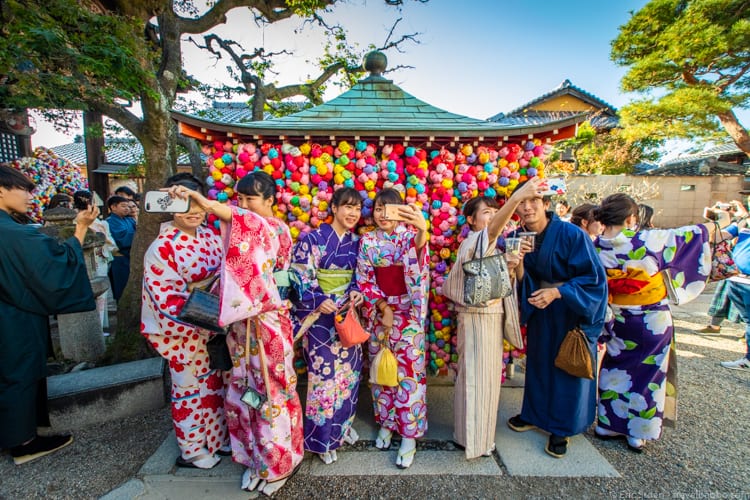
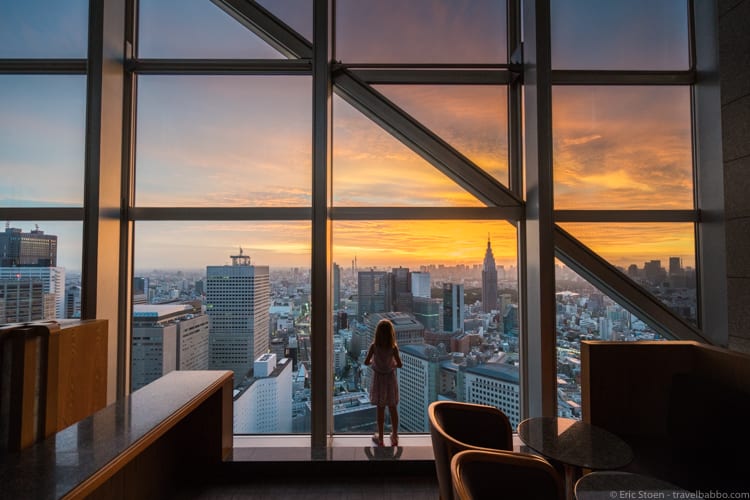

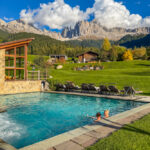
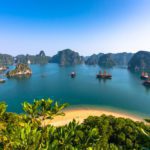
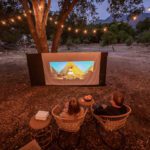
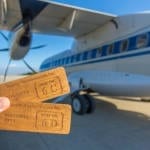
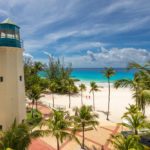
Eric,
Thanks for sharing your roundup of spots between Kyoto to Hiroshima. I’ve spent some time there and can attest to some of the ones you included. Those Fushimi Inari are just unreal and not too hard to capture without people, but yeah. It’s helpful to show up early like you seem to have done there. I never got to visit Saihoji in Kyoto but will definitely try next time. That place looks awesome!
I’ve always been partial to the Ginkakuji (Silver Pavilion) for the story behind it and the moss gardens as well. You’re so right about Miyajima, btw. That was a wonderful daytrip for my wife and friends and I a few years back. Loved how you captured the gates in the water there. Really cool stuff.
I could go on about the things you’ve included here but will just say I’m totally envious of the people who’ve visited Koya San. Everything I’ve seen and heard makes me want to book a ticket right now! Otherwise, thanks for sharing all these places and pictures here. I really enjoyed your summaries and photos, Eric. Take care.
Thanks Duke! I just looked up the Silver Pavilion. Looks great – I’ll add that to my itinerary next time. And yes, the places you note are the places I would love to get back to and spend more time at next time – Koya San, Miyajima, Fushimi Inari. Thanks for confirming that we hit a lot of the highlights!
Great suggestions! Spent some time in Japan as well and would add the following places:
(just google them for pictures)
-Nikko, just 1,5 hours north of Tokyo; world heritage site for a reason
-Kiso valley: the hike from Magome to Tsumago is amazing; Edo period towns
-Himeji Castle and especially the Sho-sha-zan Engyo-ji temple area, where The Last Samurai was filmed
-Kurashiki (close to Okayama); famous for it’s preseved canal area
-Hakone; great onsen area with good views of Mt Fuji
Thanks Jan. This trip we stayed between Kyoto and Hiroshima – next time I’ll head east and north. Those sites all look great! I’d love to do the climb up Mt Fuji as well.
Hi Eric! I completely agree with your next time tips. Particularly the Bamboo Forest and Fushimi Inari Taisha. Those were the exact thoughts I had there. Your photos are amazingly beautiful, too!
Thanks Rachel!
Gorgeous photos! I’m planning for Osaka next spring & from your post, I might want to stretch Kyoto from one to two days.
If I went back I’d spend 2-3 days in Kyoto. There are a lot of unique sites.
I last visited Japan in November 2015. In order to gain entrance to Saihoji Temple I had to apply for a reservation well in advance. I applied in September for a mid-November visit but the day I wanted to go was already full. I recommend using a Japanese service (for a small fee) that will apply on your behalf as everything is in Japanese – even the response which is sent to your hotel in Kyoto. The hotel emailed me when I was still in Canada and kindly translated the letter for me. If your reservation is denied, your fee is refunded promptly. Oh well, I guess I will have to go back to Japan and try again some day!
Thanks Naomi – that’s great to know. I went with NatGeo so they had obviously done that in advance for us. Yes, I’d highly recommend trying again. It was one of the definite highlights.
We went to Japan last year with our (then) 10 year old son and he LOVED the food! You can buy and eat sushi or yakitori, ramen or other definable food wherever you want to, so I don’t agree it is not suitable because of the food. We didn’t meet a lot of other families and it was hard to find hotels with outside swimming pools, but that were for us the only 2 reasons less perfect with a child.
Thank you for the feedback Elles. That’s great that your son didn’t have issues with the food. My son is eight and wants to go to Japan, so I’ll likely have first-hand experience in the next year.
I went to Japan for the first time in last September, visiting my sister and attending her graduation. We only explore Osaka, Kyoto and Hiroshima. Because she should come back to Hiroshima immediately for preparing the graduation, i only spent 3 days 2 nights in Osaka and Kyoto. The rest of my stay were spent in Hiroshima. So, some spots you wrote here is the same place i visit. Too bad, when i visit the Bamboo Grove and Fushimi Inari Taisha, it was already dark. I need to comeback one day to explore more. Thankyou for the recommendation and the tips! 🙂
You choose some beautiful places! The bamboo forest is one of my favorite places in Japan. I’m afraid I have to disagree about the food too. There is a huge range of food to choose from, particularly in the cities. You can always get egg dishes, pasta, pizza, burgers, fries etc if your kids don’t want to eat traditional Japanese food. The bakeries are great too! We will be traveling there with our 2 year old soon. It’s a great place for kids. 😊
Perfect! I’ve been told that for our trip we were honored with a lot of “high end” foods. Looking forward to dining normally next time we visit!
Hello Eric,
Thank you for your article on Japan, very interessting! I have never been to Japan before, therefor my questions: would you say that Japan is accessible for people who have difficulties walking? And even for people in a wheelchair? In cities but especially outside the city: How are the roads / pavements and entrances? do you have any idea of this?
Thank you very much for your reply.
Peggy
Hi Peggy,
I’m sorry, but I don’t know whether Japan is generally accessible for those with difficulties walking. Cory Lee is my go-to wheelchair guy (http://www.curbfreewithcorylee.com), but I don’t see Japan listed on his site. It may still be worthwhile to contact him to see if he can point you to reliable information?
I would love to know how you got to Mount Koya: Okunoin Temple and Cemetery. I have been trying to work out how to get there but the only option seems to be by car. If you took public transport I would be very grateful if you could let me know how I can do the same. This is my second time in Japan. The first time I backpacked around there for 2 weeks in April 2018. This time I am taking my sons and my husband with me in September-October 2019. Since I am a Buddhist (although not a very good one) I would dearly love to see this place.
Many thanks
Hi Melissa. I unfortunately have no knowledge of the Japanese public transport system. On this trip, National Geographic arranged a private bus to take us to Mount Koya.
Hi Melissa – just want to make sure you see Naomi’s post below with guidance on getting to Mount Koya.
Hello Melissa,
I visited Koyasan this past February 2019. I encourage you to make the journey – it is well worth it. I use HyperDia.com to plan all my rail journeys when in Japan. I always get a JR pass in advance. I was already in Wakayama prefecture when I went to Koya so I departed from Wakayama Station to Hashimoto Station using my JR Pass. Once there you will have to switch to a local train (non JR line) called Nankai Electric Railway to Gokurabashi Station. From there you can take the cable car up to Mt. Koya. You can also check out https://www.japan-guide.com/e/e4904.html for directions on how to get to Koya-san from other starting points like Osaka.
Unfortunately for me, the Nankai electric cable cars were out of service as they were being replaced. Two weeks after I was in Koyasan, the cable cars were back in service. A bit of bad luck in timing for me, but the fancy new cars will definitely be in service for you now! Across the street from Hashimoto Station is the Nankai office where you can purchase a pass for a return trip from Hashimoto to Koya-san and unlimited trips on the Koya Bus that runs through the little town. I bought the pass that includes the return trip plus two-days unlimited use on the Koyasan bus which was 2160 Yen (approx. $26 CAD).
Be sure to pick up the cable car schedule at Hashimoto Stn. and/or Gokurabashi Stn. – the times differ slightly from weekday to weekend. To be honest, I didn’t really use the two-day bus pass that much while in Koya-san. I stayed at Fudoin Temple which is sort of in the middle of the main street. I found walking easy and very pleasant.
Okuno-in is at the far end of the main street and is as mysterious and magical as people say it is. I went in the morning and had the place pretty much to myself…well, I cannot discount the 200,000 souls who are resting there! Believe me, there are moments where you can feel their presence. My favorite of the Buddhist deities is Jizo Bosatsu and there are many, many representations of him in the cemetery. Look carefully in tiny knot holes in trees or semi-hidden under large stones – you will find tiny Jizos! He is often depicted child-like, with a round baby’s head, gentle expression and dressed lovingly in a hat and a bib. He is the protector of children and travelers.
Plan to spend a few hours at Okuno-in and, if possible, at different times. I only had time to visit during the daylight but when I return (and I will return someday!) I would like to visit at night when all the lanterns are lit.
Happy travels!